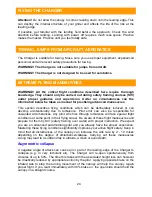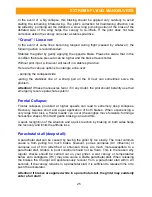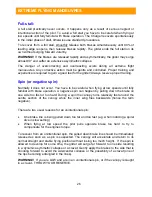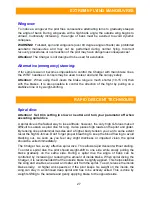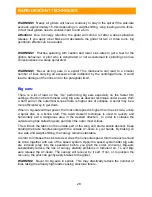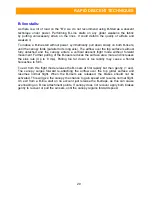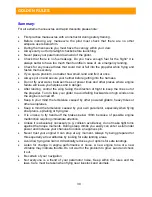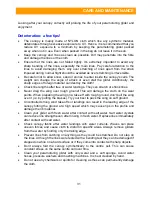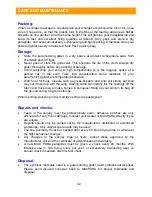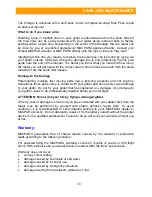
18
FLYING THE CHARGER
Hold the A lines in the left hand along with the left brake handle and the throttle (if you
have it on the left side), and the D lines in the right hand along with the right brake
handle (and the throttle if you have it on the right side). Once the canopy is above your
head you release the A and D risers then turn 180 degrees into wind while keeping the
glider under control. Once you feel equal pressure and a stable canopy above you then
you can accelerate. Once you are safely airborne, continue heading into the wind to
gain enough height.
Do not try to climb too steeply by applying too much brake. The additional drag caused
by brakes decreases actual climbing rate. If there are no obstacles present, it is safer to
fly level for a while after take-off and gain some speed before converting it to height. As
already mentioned, don`t try to get into the seat immediately after you leave the ground
as you are still relatively low. Instead, continue into the wind, climb to a safe height, and
then gently throttle back before getting into your harness/seat.
It is better to start to learn this A and D reverse technique without the paramotor. Once
you practise a bit you can start trying it with the paramotor. Using this technique allows
you to build a wall directly into wind while standing in the centre of the canopy.
When deflating the canopy on the ground in strong winds or aborting a launch, pull
down on the C or D risers instead of the brakes. Using the brakes in strong wind will
cause more lift. This could lift the pilot up off the ground and dangerously drag him/her
back.
Golden rule!
For any aircraft the most important thing on take-off is proper amount of
speed. High angles of attack and low speeds are more likely to cause a stall.
ATTENTION!
You should always be able to land safely in case of engine failure.
Too much brake input during take-off is risky. Depending on the design and power of
your paramotor unit, it is possible that you will notice engine torque moments while not
sitting properly in your harness. Be ready to counter-steer with a brake input to correct
turning tendencies and keep you flying straight. You also can compensate torque
moments by adjusting cross bracing if present on your harness or by adjusting Charger
torque compensator line on the opposite riser of the torque turn. Different settings of
trims on each riser and shifting your weight to the opposite side of the turn tendency will
help to keep the glider in a straight direction after take-off.
The reverse launch technique can take some time to master. Turning the wrong way
can result in the pilot taking off with twisted risers. Practice the reverse launching
technique on a training hill or slight slope first with your instructor to build up your
confidence. Again, make sure your engine is off until you have practised enough to
prevent the lines from getting sucked into the spinning propeller. If this does happen
contact your nearest MACPARA dealer for replacement lines or glider repair.
Summary of Contents for CHARGER
Page 1: ...1 ...
Page 10: ...10 TRIMMING ...
Page 35: ...35 LINE PLAN SCHEME ...
Page 38: ...38 ...
Page 40: ...40 ...





















